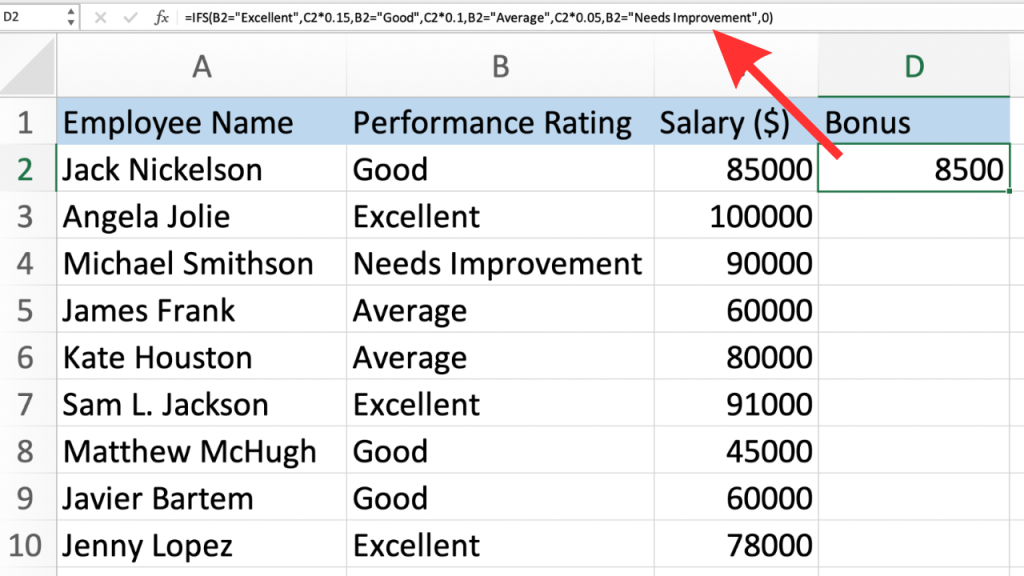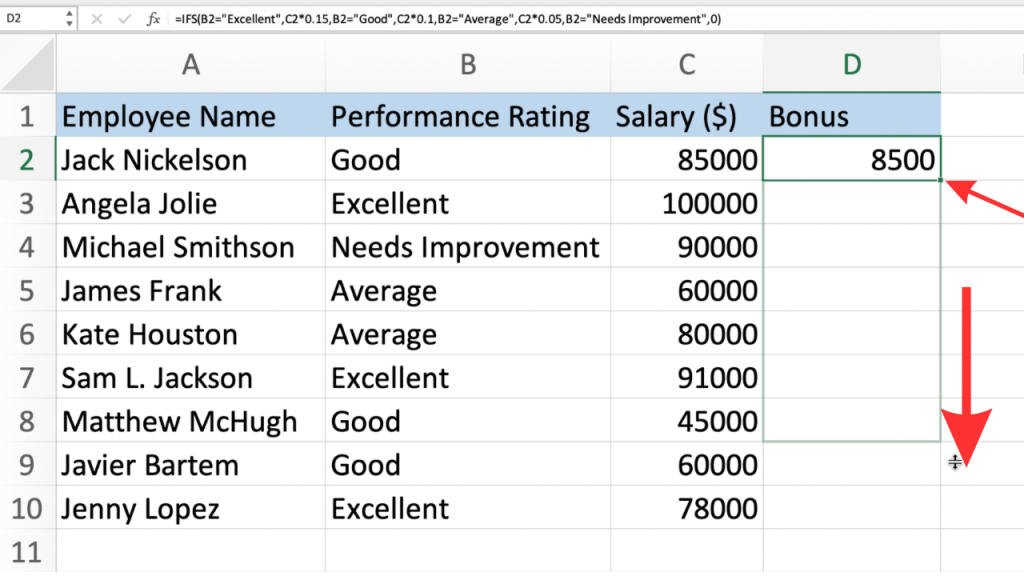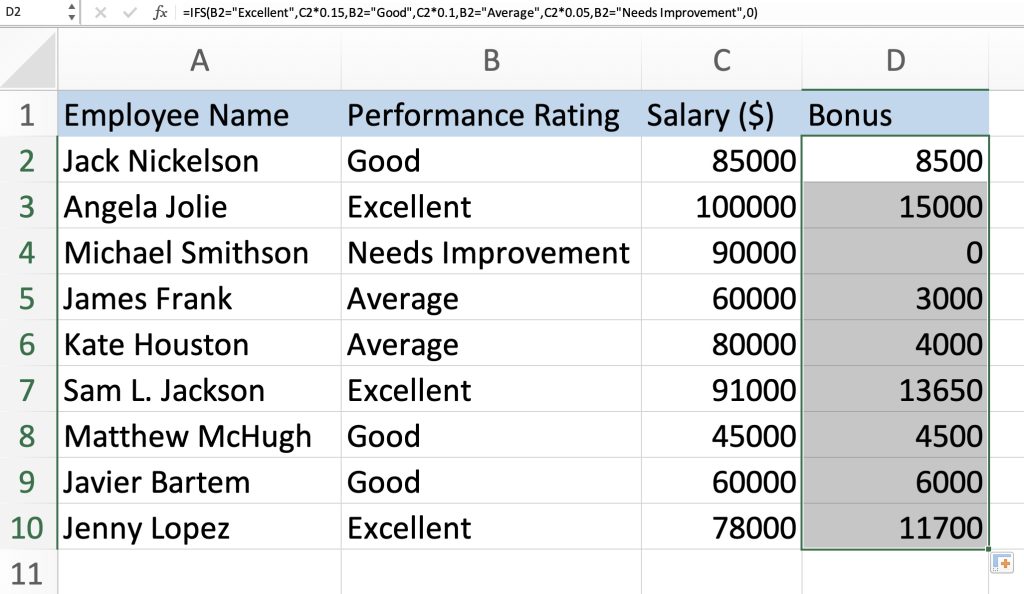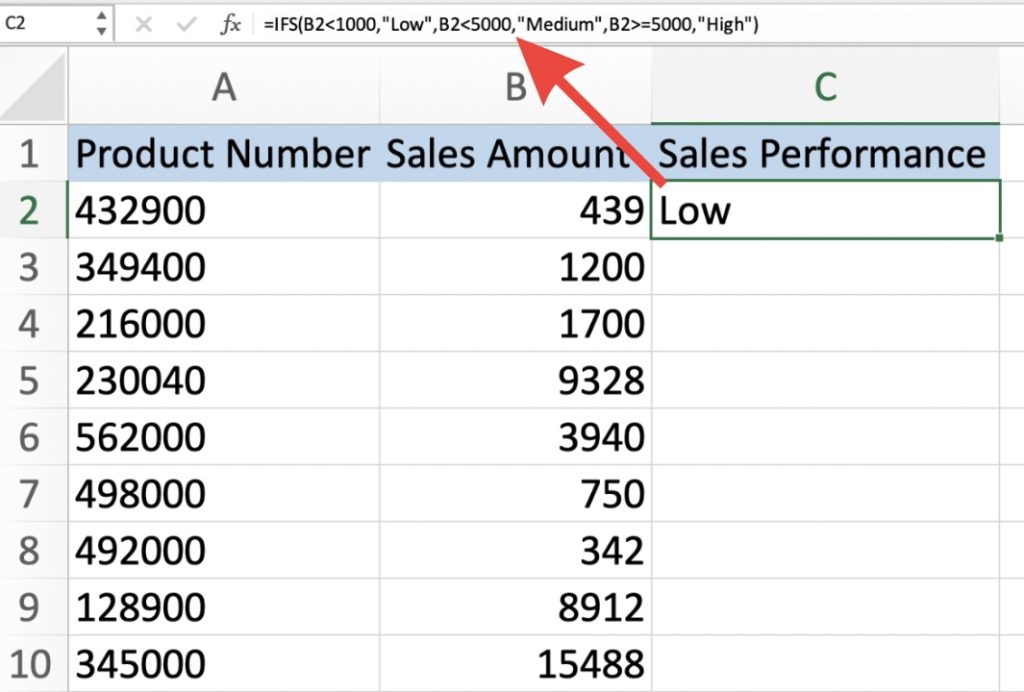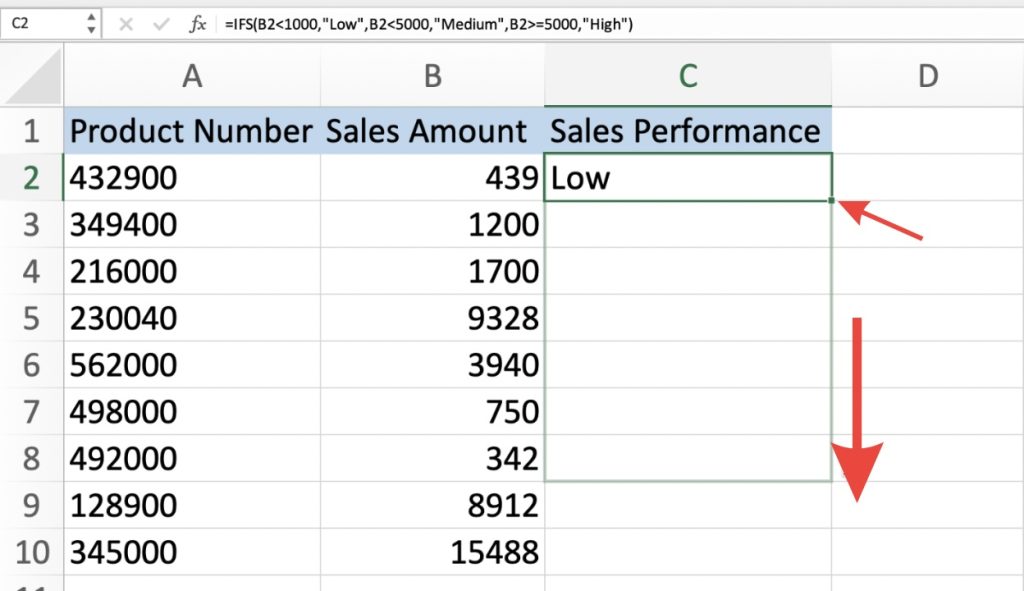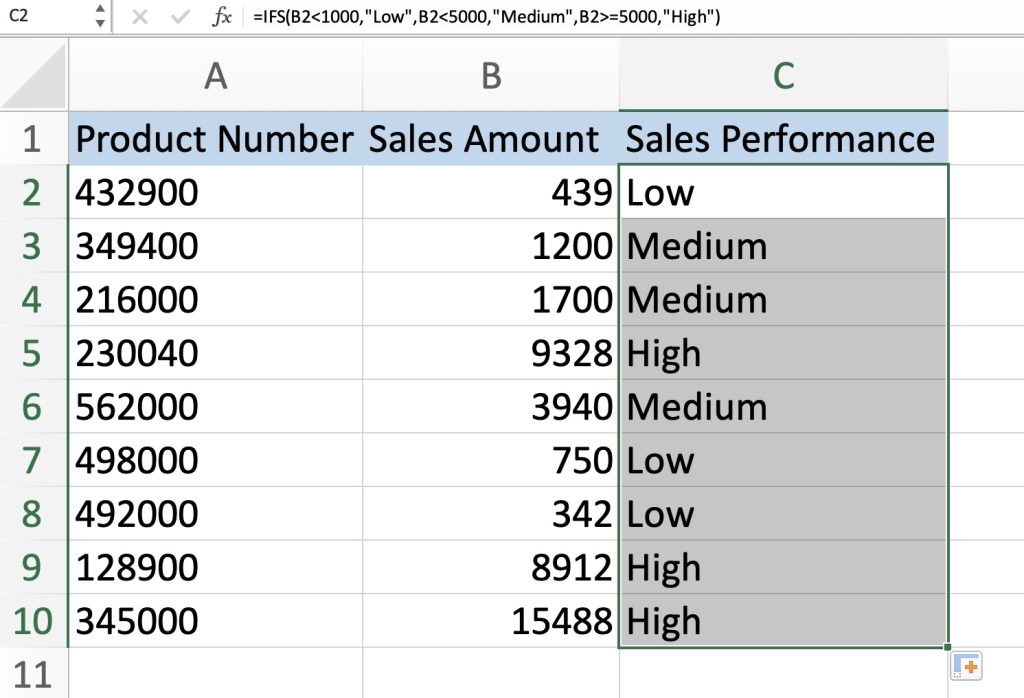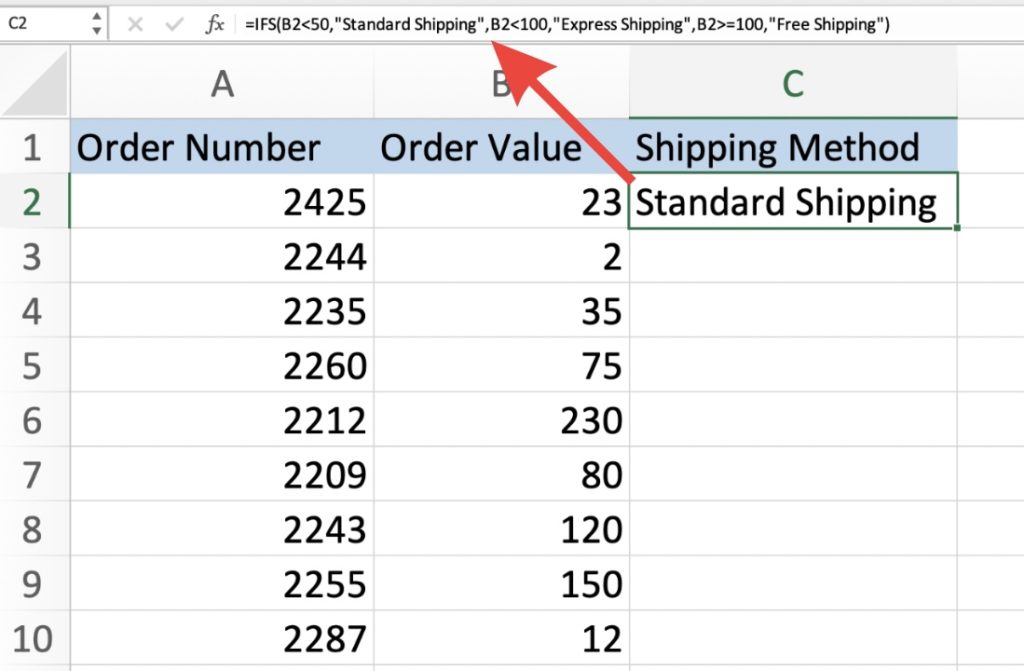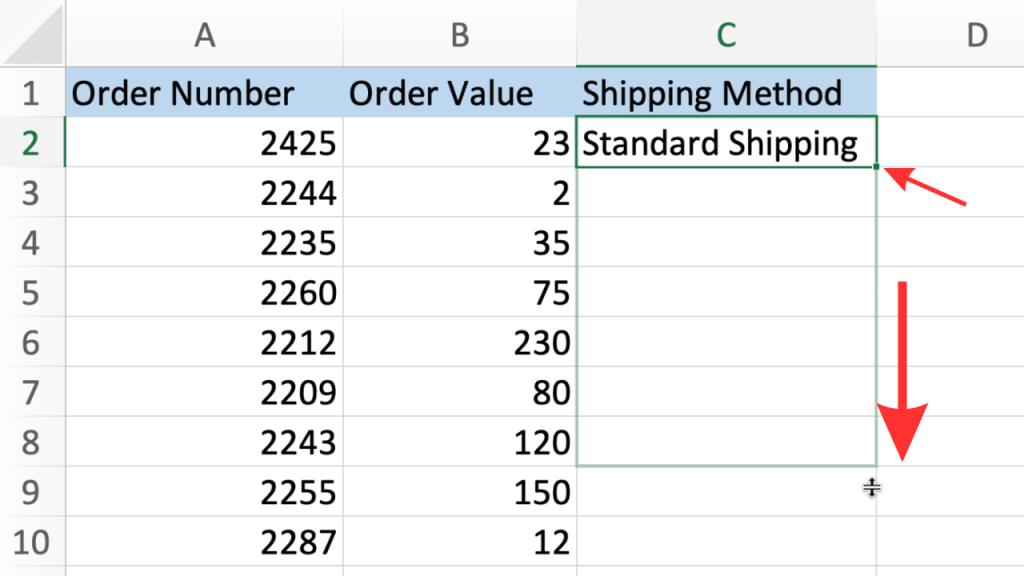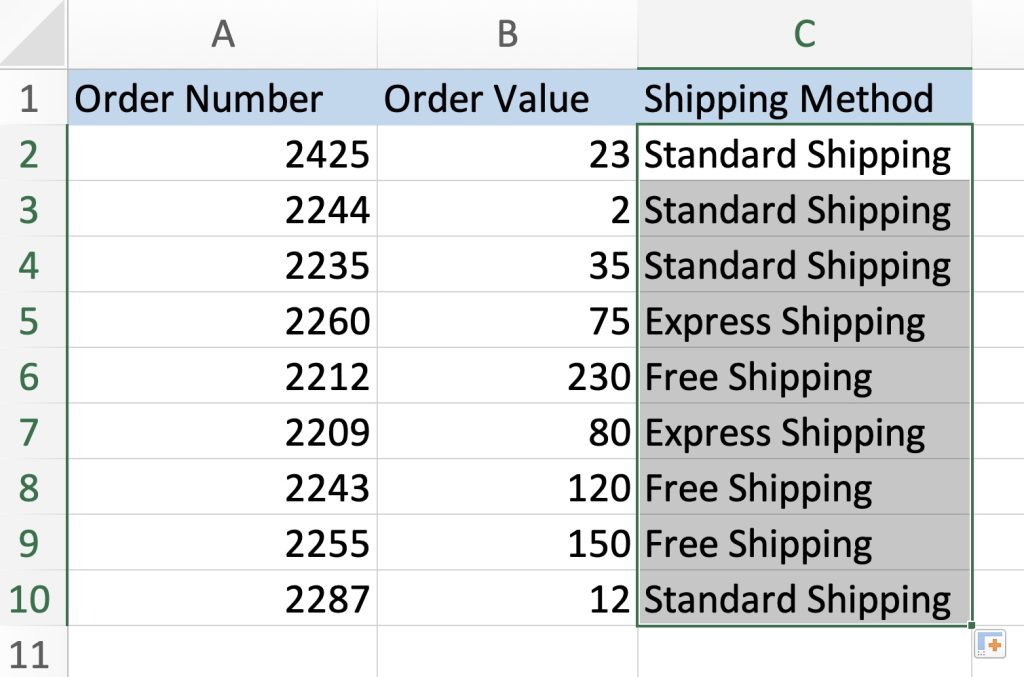The IFS function in Excel allows you to perform multiple conditional tests in a single formula and return different results based on the conditions met. In this article, we will delve into the IFS function’s definition, its application techniques, and demonstrate examples to showcase its real-world application.
Table of Contents
Let’s explore these methods!
Download the Excel Workbook below to follow along and understand The IFS Function in Excel – download excel workbookIFSfunction.xlsx
What is the IFS Function?
The IFS function in Excel checks multiple conditions and returns a value based on the first true condition. It is especially useful when you have a series of conditions to check and want to return different results based on which condition is met.
The IFS function simplifies complex nested IF statements and makes your formulas more concise and readable.
Syntax of the IFS Function
IFS(logical_test1, value_if_true1, [logical_test2, value_if_true2])
logical_test1: The first condition you want to evaluate.
value_if_true1: The value or expression to return if logical_test1 is true.
[logical_test2, value_if_true2]: Optional additional conditions and values to evaluate.
What it means:
=IFS(first condition to check, value to return, [succeeding conditions to check])
How to Use the IFS Function
The IFS function is easy to use. Follow these steps:
Select the cell where you want the result to appear.
Type the following formula, replacing logical_test1, value_if_true1, logical_test2, value_if_true2, and so on with your specific conditions and values:
=IFS(logical_test1, value_if_true1, [logical_test2, value_if_true2], …)
Press Enter to execute the formula. Excel will evaluate the conditions in the order they are provided and return the value associated with the first true condition.
Examples of Using the IFS Function
Let’s explore some practical examples of how to use the IFS function in Excel.
Example 1: Employee Bonus Calculation
Suppose you manage a company, and you want to calculate the year-end bonuses for your employees based on their performance ratings. You can use the IFS function to assign different bonus percentages according to their ratings:
In cell D2, Enter the formula:
=IFS(B2 = “Excellent”, C2 * 0.15, B2 = “Good”, C2 * 0.1, B2 = “Average”, C2 * 0.05, B2 = “Needs Improvement”, 0)
Click and drag down the square at the bottom-right of cell D2 to apply the formula to the rest of the rows.
In this example, the IFS function checks each employee’s rating and calculates the bonus accordingly.
- Employees with an “Excellent” rating receive 15% of their salary as a bonus
- “Good” ratings get 10%
- “Average” ratings receive 5%
- “Needs Improvement” receive no bonus
Example 2: Categorizing Sales
Suppose you have an e-commerce business selling printed shirts online. You have a list of sales amounts in column A and want to categorize them into “Low,” “Medium,” or “High” based on predefined thresholds:
In cell C2, Enter the formula:
=IFS(A1 < 1000, “Low”, A1 < 5000, “Medium”, A1 >= 5000, “High”)
Click and drag down the square at the bottom-right of cell C2 to apply the formula to the rest of the rows.
- If the sale amount in cell A1 is less than 1000, the formula returns “Low.”
- If the sale amount is between 1000 and 4999, it returns “Medium.”
- If the sale amount is 5000 or higher, it returns “High.”
Example 3: Selecting Shipping Method
Continuing on with the e-commerce store example, and you want to recommend a shipping method based on the order value:
In Cell C2, Enter the formula:
=IFS(B2 < 50, “Standard Shipping”, B2 < 100, “Express Shipping”, B2 >= 100, “Free Shipping”)
Click and drag down the square at the bottom-right of cell C2 to apply the formula to the rest of the rows.
-
- If the order value in cell B2 is less than $50, the formula recommends “Standard Shipping.“
- If the order value is between $50 and $99, it recommends “Express Shipping.“
- If the order value is $100 or more, it recommends “Free Shipping.”
Conclusion
The IFS function in Excel streamlines complex logic and improves the readability of your formulas. By familiarizing yourself with the syntax and examples presented in this article, you can efficiently use the IFS function to optimize your spreadsheet tasks and make your data analysis more efficient.
Click here to learn How to Use the IF Function in Excel – The Easy Way!
Click here to Harness the Power of Excel SUMIFS with Date Range – 2 Useful Examples
Click here to learn How to Use SUMIFS Function in Excel
Click here to access Microsoft’s tutorial on the IFS Function!
John Michaloudis is a former accountant and finance analyst at General Electric, a Microsoft MVP since 2020, an Amazon #1 bestselling author of 4 Microsoft Excel books and teacher of Microsoft Excel & Office over at his flagship MyExcelOnline Academy Online Course.

